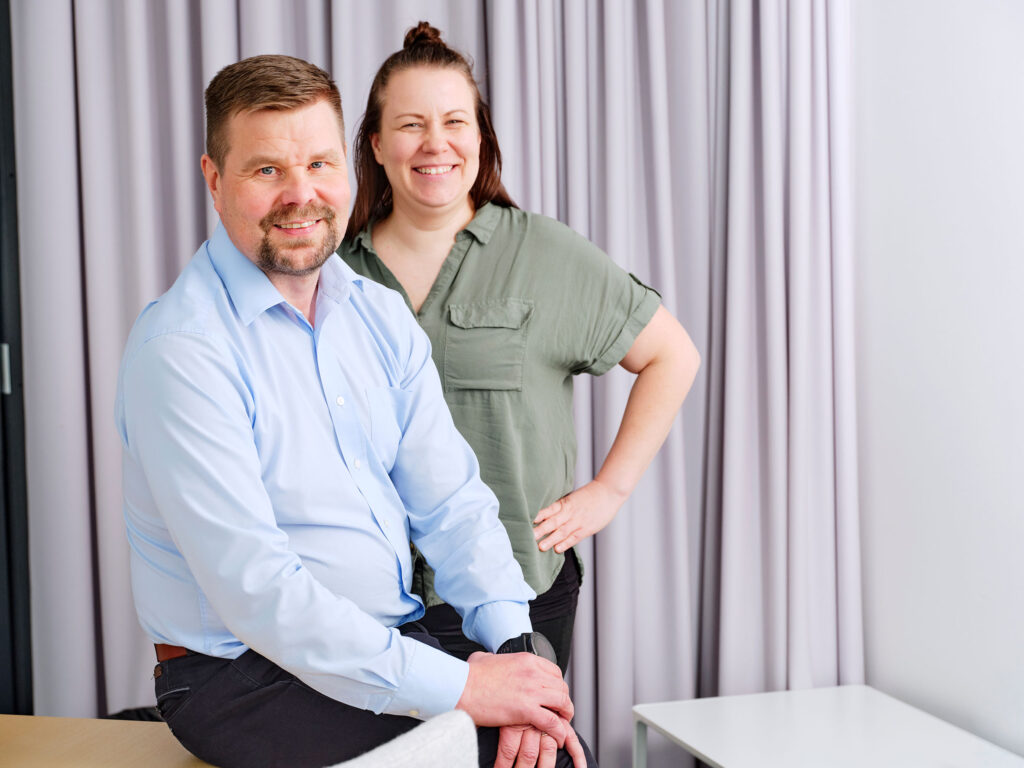The power grid will require considerable reinforcement over the coming years to accommodate both growth in domestic consumption and new international investments.
“The doubling of electricity consumption by 2035 is a huge change, which is being driven by both the electrification of industry and the increasing use of electricity for heating in particular,” says Planning Manager Aki Laurila.
The main grid development plan is Fingrid’s primary tool for assessing and scheduling future development needs in the electricity network. The transition from fossil fuels to clean electricity may attract new electricity-intensive industries to Finland, and the main grid must enable these developments.
Fingrid will make sure that Finland’s electricity network is a competitive advantage, not an obstacle.
“Finland is an attractive country for electricity-intensive industry, but there is fierce competition for investments. Fingrid will make sure that Finland’s electricity network is a competitive advantage, not an obstacle,” says Laurila.
A plan for the next ten years
In accordance with the Electricity Market Act, the main grid development plan contains the measures that the transmission system operator will employ over the next ten years to meet its development obligations and quality requirements.
A report is published every two years, and its appendices include a comprehensive forecast of electricity consumption and production.
“The development plan does not include detailed investments. It merely indicates which grid reinforcements would be required if ambitious electricity consumption forecasts are realised,” says Grid Planning Expert Kaisa Nykänen.

Finland currently consumes around 83 terawatt hours of electricity per year, and consumption is expected to rise to more than 150 terawatt hours by 2035. This growth will be driven by both the use of renewable energy and investments in industries that require electricity.
The increase in consumption will not, however, be evenly distributed. Electricity consumption is concentrated on large cities in southern Finland: two-thirds of the country’s electricity consumption is now located to the south of Tampere. Facilities for generating renewable electricity, mainly wind power, are also being built in large numbers in northern Finland and on the west coast.
“This imbalance highlights a need to strengthen north–south and west–south backbone connections,” says Nykänen.
The forecasts given in the main grid development plan are purposefully ambitious, so that any potential problems can be identified in good time. The plan is flexible and regularly updated on the basis of changing needs.
“In any case, it’s clear that as demand for electricity doubles, the main grid must be developed at an accelerating pace,” says Nykänen.
Objective: All connections can be implemented
Large-scale transmission line projects take between seven and eight years to complete, so the future must be planned for well in advance. The actual investment decisions will be made flexibly, depending on the progress of customer projects.
“We maintain continuous dialogue with our customers to ensure that investments in the grid are directed to where they are most needed at the time. This also allows us to address timetable challenges, such as the electrification of heating, which is progressing much faster than new transmission lines can be built,” says Laurila.
Our operating environment is changing rapidly, and new projects can emerge unexpectedly.
The connections needed for electric boiler investments in particular require flexibility and rapidly implemented grid reinforcements – and even then, the grid connection may not be completed within the customer’s desired timeframe. Whereas large-scale wind farm projects are usually completed in parallel with grid construction.
“Our operating environment is changing rapidly, and new projects can emerge unexpectedly. However, our main grid development plan is a means of ensuring that all green-lit projects can be connected to the grid. We are also simultaneously planning the development of regional networks,” says Nykänen.
Billions of Euros invested in the main grid
Fingrid is investing more than ever in the main grid. In 2025–2028, investments will increase to 2.0 billion euros. Looking up to 2035, the total amount of investments will increase to an estimated 5.2 billion euros.
Investments will strengthen north–south and west–south backbone connections in particular. Several new main grid connections will be completed in southern Finland by the end of the decade. Eastern Finland is also preparing for growth.
“We are launching an environmental impact assessment for a new 400-kilovolt transmission link between Huutokoski and Kontiolahti. It would improve electricity transmission connections in North Karelia in particular, and would also create opportunities for clean electricity,” says Laurila.
Grid development is not only focused on new transmission lines – Fingrid is also looking for new and flexible solutions to speed up customer projects.
For example, conditional connection agreements will provide added security for major industrial projects during the decision-making process, as a connection agreement can now be signed at an earlier stage. Hybrid connections and flexible arrangements can speed up the connection of new facilities.
In a hybrid connection, electricity consumption and production are both connected to the main grid via one connection point, thereby reducing transmission needs. Flexible grid connection agreements enable more flexible connection solutions, and may thereby allow the required grid reinforcements to be postponed during the initial stages of a new connection.
The final version of Fingrid’s main grid development plan will be published at the end of the year.







